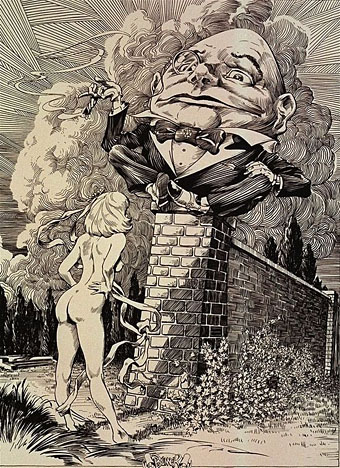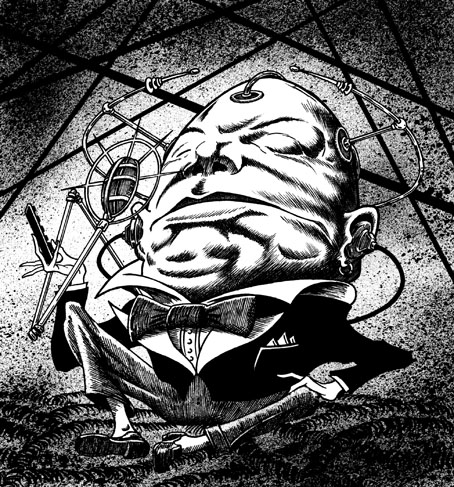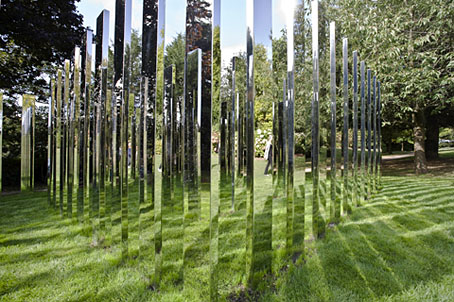One nation under a Moog | Synth Britannia.
Month: October 2009
Humpty Dumpty variations
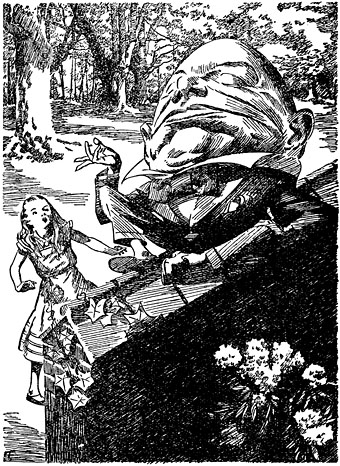
Humpty Dumpty by EB Thurstan (1930).
A preoccupation of the past couple of weeks has been Lewis Carroll’s Alice books as I’ve been working on an Alice in Wonderland project which I’ll unveil shortly. Looking around at some of the numerous visual interpretations of the stories I came across two portfolios I hadn’t seen before by comic artist Frank Brunner. These are from the late Seventies, and typically for that decade they work an erotic twist on the books by adding ten years to Alice’s age whilst depriving her of clothes. Nudity aside, Brunner’s drawings don’t depart from tradition very much—or add much, for that matter—but I did notice that he’d based his Humpty Dumpty figure on an earlier version by illustrator EB Thurstan.
Humpty Dumpty by Frank Brunner (1978?).
The reason Thurstan’s Humpty is so familiar is that I’d borrowed it myself for one of the many appearances by the character in the Lord Horror comic series, Reverbstorm. Humpty’s presence there would involve too much explanation so you’ll have to be satisfied with the character who explains Jabberwocky remaining inexplicable. As for Brunner’s drawings, you can see coloured versions on his website.
Humpty Dumpty from Reverbstorm #3 (1994).
Previously on { feuilleton }
• Alice in Wonderland by Jonathan Miller
• The Illustrators of Alice
Technology, then and now
A recent book purchase was A Century of Punch (1956), a weighty collection of drawings from the humour magazine edited by RE Williams. While much of the comedy is now very dated, many of the illustrations and cartoons yield other pleasures, not least by being a fascinating snapshot of the times and their attitudes. Some of those attitudes remain with us, and the handful of drawings below struck me for their resonance with current discussions about the impact of new technology. But first, here’s a far-sighted prediction from 1878 (note: Ceylon is now Sri Lanka):
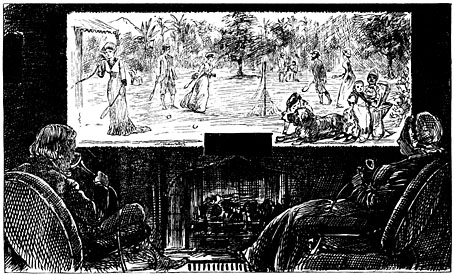
EDISON’S TELEPHONOSCOPE (Artist unknown)
Paterfamilias (in Wilton Place): “Beatrice, come closer, I want to whisper.”
Beatrice (from Ceylon): “Yes, Papa Dear.”
Paterfamilias: “Who is that charming young lady playing on Charlie’s side?”
Beatrice: “She’s just come over from England, Papa. I’ll introduce you to her as soon as the game’s over.”
Jeppe Hein’s mirror labyrinth
Follow Me by Jeppe Hein. Photo by Jamie Woodley.
More mirror art. Yes, I really like this kind of thing, and this particular example, Follow Me by Danish artist Jeppe Hein, looks especially fine with the sunlight and trees reflected from its panels. Hein’s labyrinth is a new and permanent installation in the grounds of Royal Fort House at the University of Bristol; the grounds are open to the public so anyone can pay the work a visit.
The artwork comprises a square labyrinth of 76 vertical polished steel plates sited at the base of an incline leading down from Royal Fort House. Visitors will be encouraged to enter the labyrinth to experience the effect of the work. Once inside, the reflections of participants and surrounding plants and trees are multiplied.
Jeppe Hein was inspired by the University as a place of self-discovery, as well as by the history of the gardens – particularly the designs of 18th-century landscape gardener Sir Humphry Repton, who similarly sought to promote imaginative encounters. (More.)
Previously on { feuilleton }
• A=P=P=A=R=I=T=I=O=N
• The art of Josiah McElheny
AFK
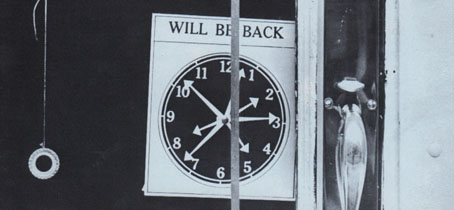
{ feuilleton } is taking a short break. As usual, you’re encouraged to browse the archives.

